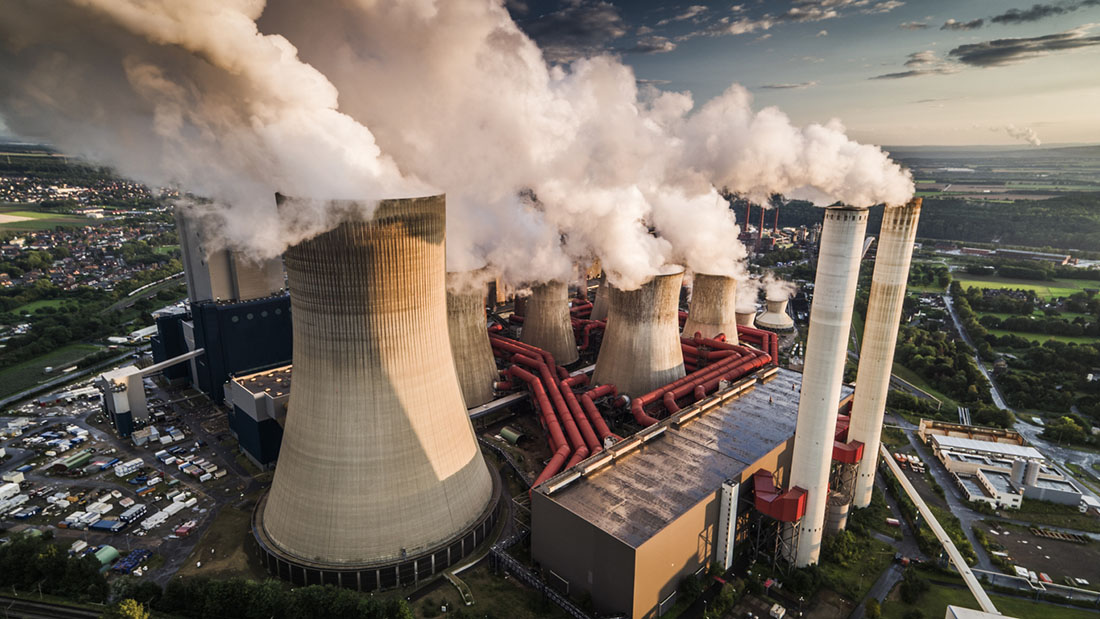From the moment it was announced that COP28 would take place in a petrostate with an oil and gas chief at the helm, there was deep concern that the climate talks would be marred by fossil fuel lobby interests, wilful disregard for the science and misguided optimism about the role of carbon capture and storage technologies.
However, from day one in Dubai, it was clear that many participants were determined that COP28 would be the moment the world called time on the fossil fuel era. In many ways, this goal was pursued with greater determination precisely because of where it was being held and who was steering the process. In our earlier analysis of COP28’s potential for success, we shared the view that COP28 President Al Jaber needed to seize the opportunity to pull off ‘climate jujitsu’ with his oil and gas peers and deliver five key ingredients of success.
After two weeks of intense negotiations, did COP28 deliver on this and the other key measures we outlined as being essential for success?
Fossil fuels finally put on notice
What was needed: A commitment to phasing out all fossil fuels, including through reform of state-owned fossil fuel companies, with a restricted role for carbon capture and storage technologies in abating power sector emissions actively recognised.
ASSESSMENT OF PROGRESS: 6/10
The crowning achievement of the ‘UAE Consensus’ delivered by COP28 is the historic call for parties to contribute to a global effort on “transitioning away from fossil fuels in energy systems, in a just, orderly and equitable manner, accelerating action in this critical decade”. There are three key reasons to be hopeful about this commitment:
- It covers, for the first time ever in a COP outcome (after 28 years), the need to move away from all fossil fuels (not just coal).
- It focusses on the fuels themselves, rather than their associated emissions. The latter would have been the case if the language on ‘unabated fossil fuels’ from earlier drafts of the text was retained (code for extensive reliance on carbon capture and storage technologies).
- It clearly communicates the need for an urgent transition ‘in this critical decade’, putting pressure on parties to end fossil fuel production and consumption as fast as possible.
However, the commitment is far from perfect. It just ‘calls' on governments to make the transition, rather than requiring them to do so. ‘Transitioning away’ is also far weaker than the ‘fast, fair, full and funded’ fossil fuel phase-out NGOs and many governments, particularly small island developing states, wanted.
On coal, the text asks only for a ‘phasedown of unabated coal’, leaving potentially huge and largely unrealistic reliance on the use of carbon capture and storage (CCS) to address coal emissions. Later in the text there is also a concerning ‘recognition’ of the role of ‘transitional fuels’ in facilitating the energy transition, widely understood to be a refer to gas.
There is reason to be concerned that these ‘loopholes’ will prevent the UAE Consensus from driving real world action. This was reinforced immediately after COP28 when Al Jaber himself said the Abu Dhabi National Oil Company will continue to invest in oil and gas production. This will confirm what many fear: that oil companies, particularly national oil companies, all still aim to maximise value from their fossil fuel assets and be the last one standing.
National climate pledges left unimproved
What was needed: An agreement to resubmit Nationally Determined Contributions with strengthened targets for 2030 and 2035 that align with what is needed to limit global warming to 1.5C above pre-industrial temperatures.
ASSESSMENT OF PROGRESS: 3/10
As was made clear by the COP President himself, Sultan Al Jaber, ‘an agreement is only as good as its implementation’ and on this point there is real cause for concern. Nationally Determined Contributions (NDCs) are the critical mechanism for implementing the Paris agreement. NDCs enshrine national targets and policies to drive change on the ground, but commitments to more ambitious NDCs were lacking.
Just 38 nations submitted revised NDCs ahead of COP28, and few contained the levels of ambition required to approximately halve emissions by 2030. The COP28 host’s own NDC only commits to a 19% emissions reduction by 2030 (from a 2019 baseline),1 even though the UAE Consensus recognises that global emissions need to drop by 43% this decade.
For all the furore around the wording on fossil fuels, the tool that might actually translate this diplomatic text into real world decarbonisation has been left neglected. Despite lengthy acknowledgement of the current failure of NDCs to deliver the required emissions reductions, the final Global Stocktake text published at COP28 contained little in the way of a clear accountability or support framework for solving this problem at the centre of the Paris Agreement.
Again, COP has ended with a ‘request’ to revisit and strengthen 2030 targets, but with no plan for ensuring targets are set or, crucially, translated into policy packages which will close the emissions gap.
Renewable energy and energy efficiency set for acceleration
What was needed: A commitment to triple global renewable energy capacity by 2030.
ASSESSMENT OF PROGRESS: 6/10
COP28 delivered an ambitious agreement to triple renewable energy capacity and double energy efficiency by 2030. However, this agreement is compromised by failing to include a baseline year from when any increase should be measured from, leaving it wide open to interpretation. Critically, it also lacks a corresponding financial commitment to support developing countries.
The sideline agreement between 118 countries, made at the start of the COP, promised to triple renewables and could help to mobilise the vast amounts of investment required. Promisingly, this does contain more specific targets, aiming for 11,000 GW of renewable capacity and annual energy efficiency improvements of over 4% in line with accepted Net Zero pathways. But without a clear financial agreement in the main negotiation text, the current commitment suffers from a credibility deficit.
In addition, the UAE Consensus failed to move the dial on inefficient subsidies which continue to make renewables struggle to compete with fossil fuels.
Loss and Damage gets a head start
What was needed: An agreed operating model for the Loss and Damage Fund with clarity on eligibility, funding arrangements and governance structures.
ASSESSMENT OF PROGRESS: 6/10
COP28 began with a momentous agreement to operationalise a Loss and Damage Fund to support developing countries, particularly those most vulnerable, to the adverse effects of climate change. After tense eleventh hour negotiations shortly before the COP began, a proposal was agreed to house the Fund at the World Bank for an initial period of four years. It was then swiftly gavelled through at the outset of COP28, along with the rest of the negotiation agenda.
Pledges to the new fund rolled in from countries including the UK, Canada and Germany, but these barely scratched the surface of what is needed to compensate vulnerable countries for climate impacts. The US’ paltry $17.5m pledge reflects a Congressional stalemate on climate and apparent reluctance to accept the principle that developed countries should be responsible for financially supporting others to recover from climate loss and damage which they helped cause.
Beyond the UAE’s $100mn contribution to the new fund, there was a distinct lack of contributions from other petrostates or other high-emitting countries such as China.
Climate finance remains a barrier to global action
What was needed: Evidenced delivery from developed countries of the $100bn climate finance commitment in developing countries, significant progress towards agreeing the New Collective Quantified Goal on Climate Finance ahead of the 2024 deadline, a doubled adaptation finance target, and steps towards reforming the global financial system.
ASSESSMENT OF PROGRESS: 4/10
Insufficient international climate finance continues to risk global progress towards Net Zero. It’s unclear whether the long awaited $100bn per year for climate finance has been met. OECD data indicates it was met in 2022, but others disagree on the basis that loans should not be fully included. The final COP28 negotiation text includes a clear commitment from countries to deliver on the target, and a slew of pledges to the Green Climate Fund suggest that some progress has been made.
However, $100bn pales in comparison to the amount of climate finance truly needed by developing countries (recognised in the final text as $215–387bn per year until 2030). The negotiations on the New Collective Quantified Goal for climate finance ended with limited progress, beyond an agreement to begin work on a draft decision text ahead of COP29, where finance is set to be the biggest ticket item.
On adaptation finance, the final text is severely lacking. It simply recognises the need for adaptation finance and encourages countries to report it more transparently. More binding text requesting “developed country Parties to provide developing country Parties... with long-term, scaled-up, predictable, new and additional finance, technology and capacity-building” was deleted from an earlier draft.
More positively, on reform of the international financial system, the UAE Consensus is the first COP cover text to refer to taxation as a method of raising climate finance. Another promising sign is the Leaders’ Declaration on a Global Climate Finance, endorsed by 13 countries, which sets out a ten point framework for delivering a reformed financial system through wider use of climate-resilient debt clauses, consideration of debt-for-climate swaps and sustainability linked bonds.
Some action aligned with this is already underway. The UK, France, the World Bank and several other multilateral development banks made commitments to expand their use of climate-resilient debt clauses. Meanwhile, both Japan and France committed to support the Asian Development Bank’s leveraging of Special Drawing Rights for climate and development. These commitments go some way towards realising Barbados’ Prime Minister Mia Mottley’s vision for a reformed financial system.
COP28 presents a fork in the road rather than a clear path ahead
The COP28 President ended the talks by declaring, “together, we have confronted realities and we have set the world in the right direction.” The more accurate reality is that COP28 offers two divergent paths that hinge on different interpretations of the conference’s outcomes.
On the one hand, the agreement to transition away from fossil fuels represents a powerful signal to companies and investors about the need to end the fossil fuel era. And on the other, the loopholes around transition fuels and carbon capture and storage, as well as continuing failure to address the gaps on national pledges and international climate finance, leave space for countries to continue fuelling the climate crisis.
The symbolic potential of the UAE Consensus is massive, but diplomatic text is not real-world decarbonisation. What matters now is the direction national governments, business leaders and financial decision makers choose to take: the path to a cleaner, safer, more sustainable future or a well-trodden route towards continually rising emissions, energy insecurity and dangerous impacts on lives, livelihoods and nature.
COP28 could be remembered for setting the world off on the first path, but the proof will be the ability of world leaders to drive meaningful change between now and 2030.
Ultimately, the phasing out of fossil fuels will only happen if governments and others succeed in reducing and eliminating demand for them in the first place by making the cleaner alternatives a reality.





